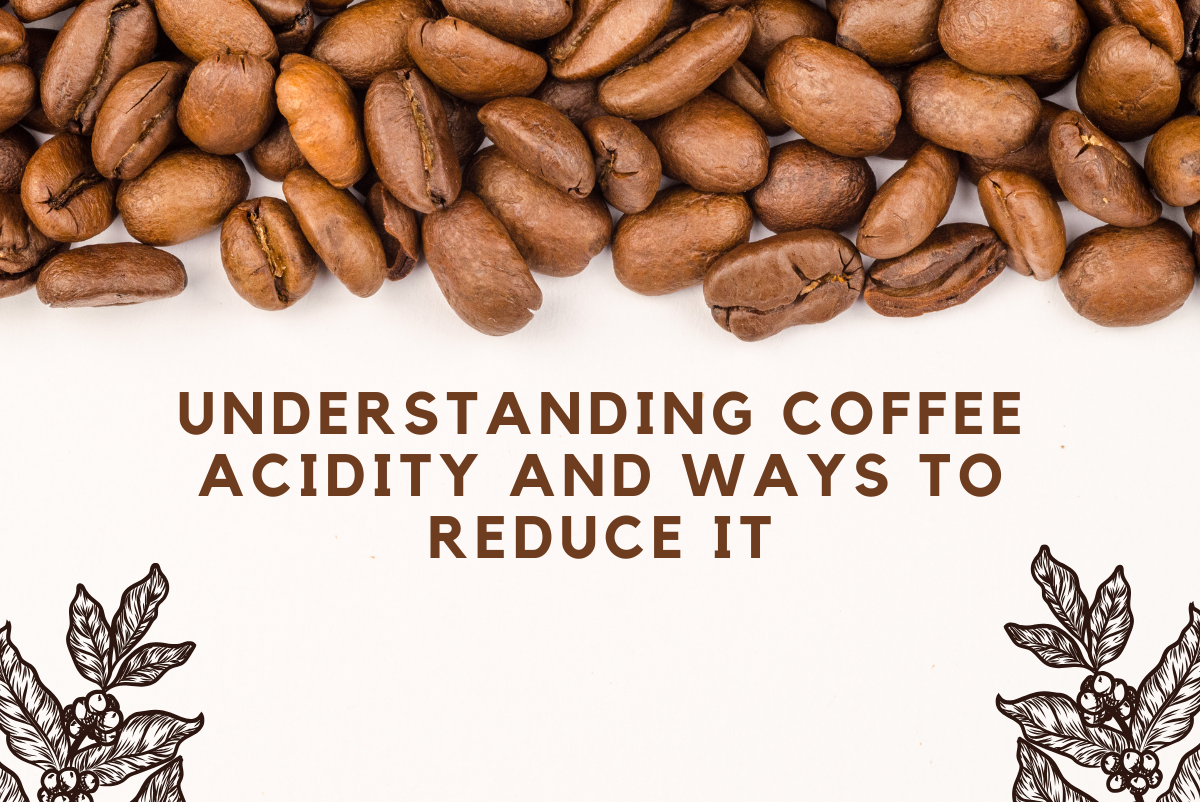
Understanding Coffee Acidity and Ways to Reduce It
|
|
Time to read 3 min
Your Cart
Your cart
|
|
Time to read 3 min
Have you ever experienced heartburn or stomach discomfort after drinking coffee? You’re not alone. Coffee acidity plays a crucial role in its flavor and health effects. While some love its bright, tangy notes, others struggle with acid reflux or enamel erosion. But is coffee acidic or basic? The answer lies in its pH level, brewing method, and bean selection. Learning how to control acidity can help you enjoy a smoother, more balanced cup, without the unwanted side effects.
Coffee is naturally acidic, with a pH ranging between 4.85 and 5.10. While this makes it less acidic than citrus juices, it can still cause acid reflux and digestive discomfort in some individuals.
What Causes Coffee Acidity?
Bean Type – Arabica beans tend to have a milder acidity than Robusta beans.
Roast Level – Lighter roasts are more acidic, while darker roasts reduce acidity.
Brewing Method – Cold brew and espresso have lower acidity than drip coffee.
Water Quality – Hard water can emphasize acidity.
Pro Tip: If acidity bothers you, opt for low-acid coffee blends or specific brewing techniques to neutralize it.
If acidity is a concern, here are the best ways to enjoy coffee while keeping it gentler on your stomach.
Best Low-Acid Coffee Options
Dark Roast Coffee – Longer roasting time breaks down acidic compounds.
Cold Brew Coffee – 67% less acidic than hot-brewed coffee.
Espresso – Less acidic due to shorter extraction time.
Low-Acid Coffee Brands – Specialty brands such as Lifeboost, Volcanica, and Puroast use slow roasting to reduce acidity.
How to Reduce Acidity in Your Coffee
Choose Dark Roasts – These naturally contain less acid.
Brew with Cold Water – Cold brew reduces acid levels significantly.
Use Alkaline Water – Balances acidity during brewing.
Add Baking Soda – A pinch can neutralize acidity.
Try Dairy or Plant-Based Milk – Calcium helps counteract acid.
Avoid These Ingredients:
Flavored Syrups & Sugar – Can increase acidity and digestive issues.
Artificial Creamers – Often contain acidic preservatives.
Low-Quality Beans – Can have higher acid levels due to poor processing.
Healthier Alternatives:
Oat or Almond Milk – Low in acidity and adds creaminess.
Cinnamon or Cacao – Reduces acidity and adds antioxidants.
Collagen or MCT Oil – Supports gut health while lowering acidity impact.
Different brewing techniques affect coffee acidity. Here’s a quick comparison:
|
Brewing Method |
Acidity Level |
Best For |
|
Cold Brew |
Low |
Smooth, less acidic coffee |
|
Espresso |
Moderate |
Strong but less acidic |
|
Drip Coffee |
High |
Traditional coffee lovers |
|
French Press |
High |
Full-bodied, oil-rich coffee |
|
AeroPress |
Moderate |
Clean, slightly acidic coffee |
While moderate coffee consumption has health benefits, excessive intake can lead to acidity-related issues such as heartburn and enamel erosion. The FDA recommends limiting caffeine intake to 400mg daily (about 4-5 cups of coffee). If you’re prone to acid reflux, consider:
Decaf Coffee – Lower caffeine, less acidic.
Half-Caff Blends – A mix of regular and decaf beans.
Herbal Coffee Alternatives – Chicory or dandelion coffee is naturally alkaline.
Drink Water Alongside Coffee – Helps dilute acidity and protect teeth.
Coffee’s acidity doesn’t have to ruin your drinking experience. By choosing dark roasts, cold brew, or low-acid brands, you can still enjoy coffee without the discomfort. Avoiding artificial additives and brewing with alkaline water can further reduce acidity for a smoother cup.
To craft the perfect low-acid brew, having the right equipment is essential. At Pro Coffee Gear, we offer high-quality grinders, brewers, and accessories designed for precision and balance. Whether you prefer espresso, cold brew, or drip coffee, our tools help you achieve the perfect extraction without the acidity.
Upgrade Your Coffee Setup Today with Pro Coffee Gear – Brew a Smoother Cup!
Yes, decaf coffee is generally less acidic than regular coffee because the decaffeination process removes some of the acidic compounds.
Yes, a small pinch of salt can neutralize some of the acidity and enhance the coffee’s smoothness without affecting its flavor.
Almond milk and oat milk are good choices as they are alkaline-forming and help balance out coffee’s natural acidity.
Higher temperatures extract more acidic compounds from coffee beans, while lower temperatures (such as in cold brewing) result in a smoother, less acidic cup.
Yes, beans from Brazil, Sumatra, and Nicaragua tend to have lower acidity compared to beans from Ethiopia or Kenya.